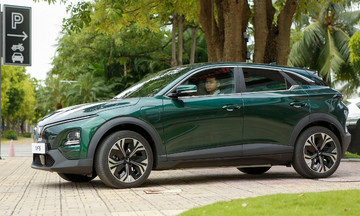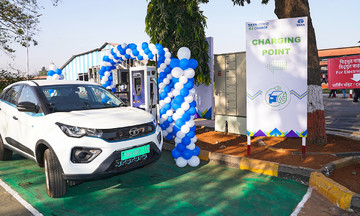On the night of 6/7 in Ho Chi Minh City, a fire broke out in an apartment in Block A of Doc Lap Dormitory on Do Doc Long Street. The fire destroyed three homes and tragically trapped eight people from two families, resulting in their deaths. The police determined the cause of the fire to be the homeowner's unauthorized electrical connections for household appliances, including electric motorcycles and cars.
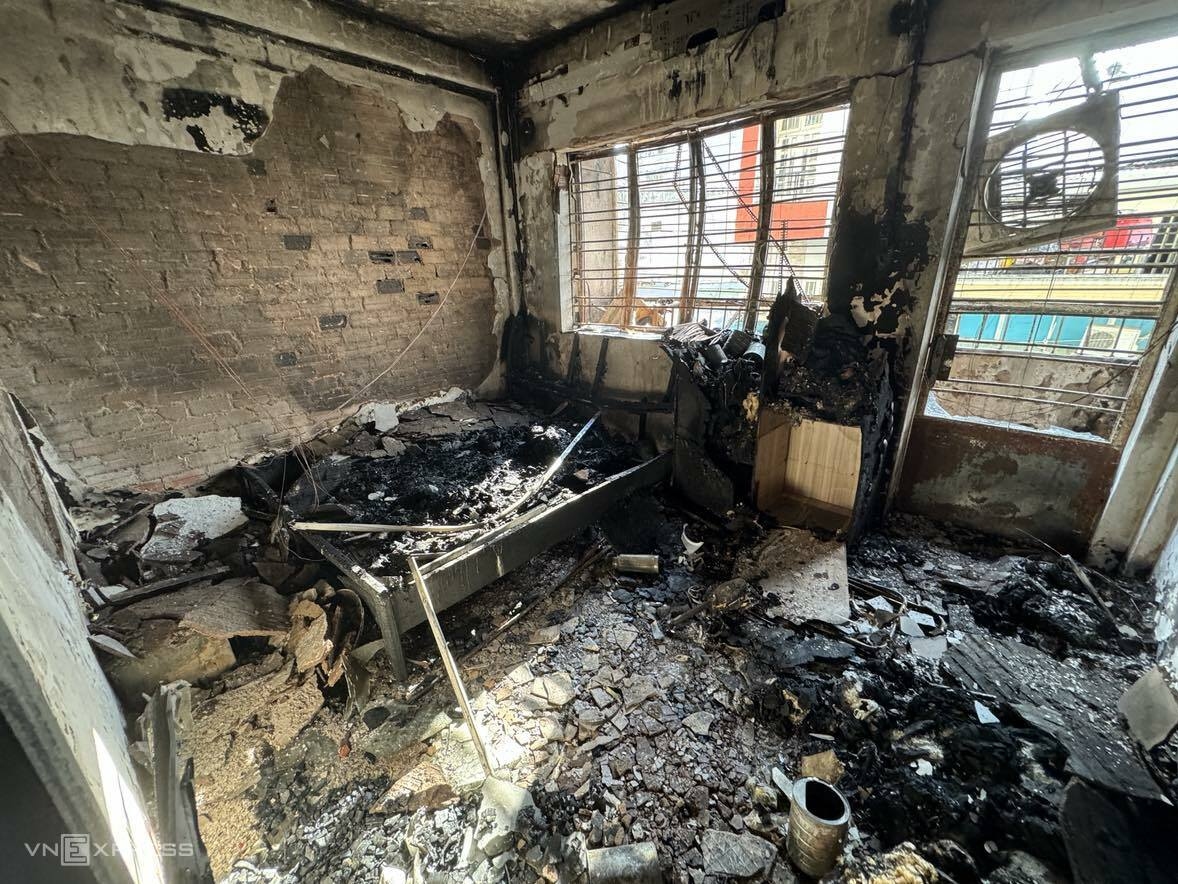 |
The scene of the apartment in Block A of Doc Lap Dormitory after the major fire. Photo: Quynh Tran |
A lack of basic electrical safety knowledge, particularly regarding electric vehicles, is a common cause of household fires and explosions. A frequent mistake is the failure to understand that high-power devices require larger gauge wiring and often dedicated circuits, not shared with other appliances.
Nguyen Khoa from Ho Chi Minh City recalled a near-disastrous mistake in 2024. He was using a small Chinese electric vehicle with a 1.5 kW charger, not requiring grounding when plugged into standard household electricity. The charger had a three-prong plug, but the outlet at Khoa's workplace was a two-prong. He used an adapter to connect them.
After 5-10 minutes of charging, the outlet began sparking, emitting smoke and popping sounds. Luckily, Khoa quickly extinguished the flames and safely disconnected the power. The adapter was melted and charred, but the electric vehicle remained undamaged.
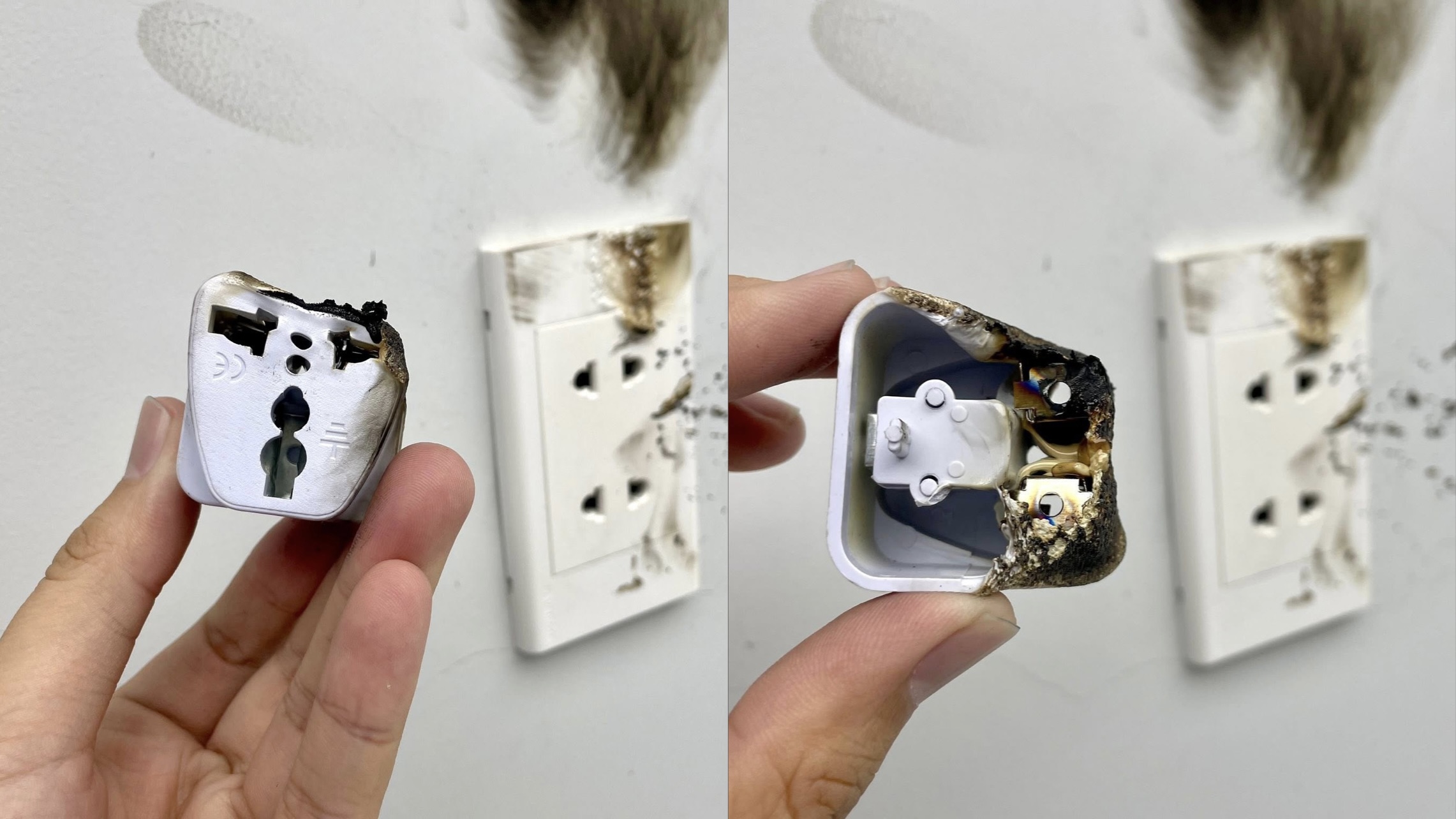 |
The adapter burnt and deformed after charging the electric vehicle. Photo: Nguyen Khoa |
"This was a costly lesson for me. It taught me to always use the correct standard and wattage outlet or adapter, not just any adapter. Additionally, it's crucial to always use grounded adapters for safety," Khoa shared.
Safety mechanisms in electric vehicle chargers typically require outlets to have sufficient wattage and grounding for home charging. If there's an electrical leak from the charger or internal circuitry to the metal casing, the grounding directs the current to the earth, minimizing the risk of electric shock and preventing fires.
Some smaller electric cars and motorcycles use low-wattage chargers that may not require grounding to operate, even if the charger plug has a grounding pin. However, using an adapter to convert a three-prong outlet to a two-prong, as in Khoa's case, removes the grounding protection, creating a fire hazard.
Using substandard adapters or low-quality components increases the risk of electrical incidents. In Khoa's case, his adapter wasn't designed for high-power charging but for small appliances like phones and laptops. Under the strain of charging the vehicle, the adapter overheated, melting the plastic and wiring, causing a short circuit and fire.
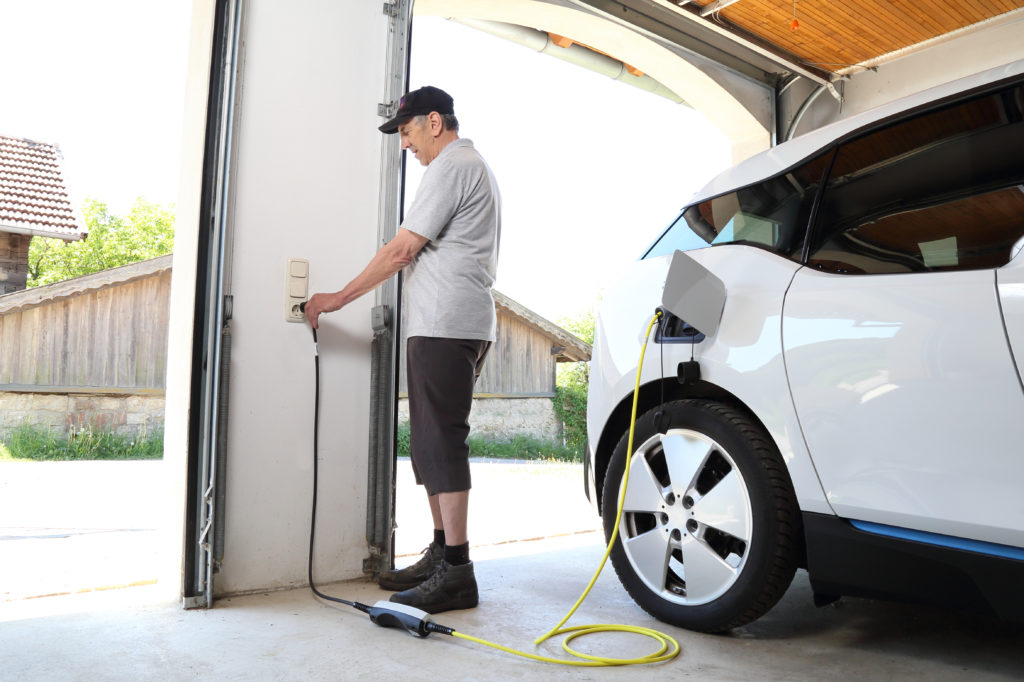 |
An electric vehicle charging at home in the US. Photo: Carparts |
Other factors can also contribute to unsafe charging and increase the risk of fires and explosions. These include using regular extension cords to lengthen charging cables, or charging in enclosed areas with flammable materials.
Using thin extension cords not rated for the current load can cause overheating, melting the internal wires and outer insulation. While extension cords might be acceptable for low-power electric motorcycles, they are not recommended for electric cars requiring high-wattage charging. Avoid using power strips for charging as they can easily overload and cause fires. Monitor the temperature of the charging cable. If it gets too hot, it's a sign of overload, and a thicker cable is necessary.
Electric vehicles should be charged in well-ventilated areas, away from direct sunlight, moisture, and flammable materials like curtains, paper, or other gasoline-powered vehicles. Charging in enclosed spaces is dangerous due to the heat generated during charging.
Charging in a confined space intensifies the destructive force of any fire or explosion. The enclosed area allows pressure to build up with no escape route. Battery explosions release toxic chemicals and intense heat. These fires are difficult to extinguish with conventional methods, and the burning battery materials can ignite other household items, accelerating the fire's spread.
Regularly inspect charging components like plugs, connectors, and outlets for damage and replace them as needed. Install a residual current device (RCD) or circuit breaker in the main electrical panel to automatically cut off power in case of a leak. When installing a home charging station, consult with the vehicle manufacturer's technicians for the safest option for your home's electrical system.
Modifying electric vehicles with non-standard parts also presents a hidden danger. For example, if a vehicle originally uses 35W lights and higher wattage lights are installed, the electrical system can overload or ignite internal wiring. When replacing electrical components like lights or screens, choose parts with the original wattage and avoid adding or modifying electrical devices.
Ho Tan









